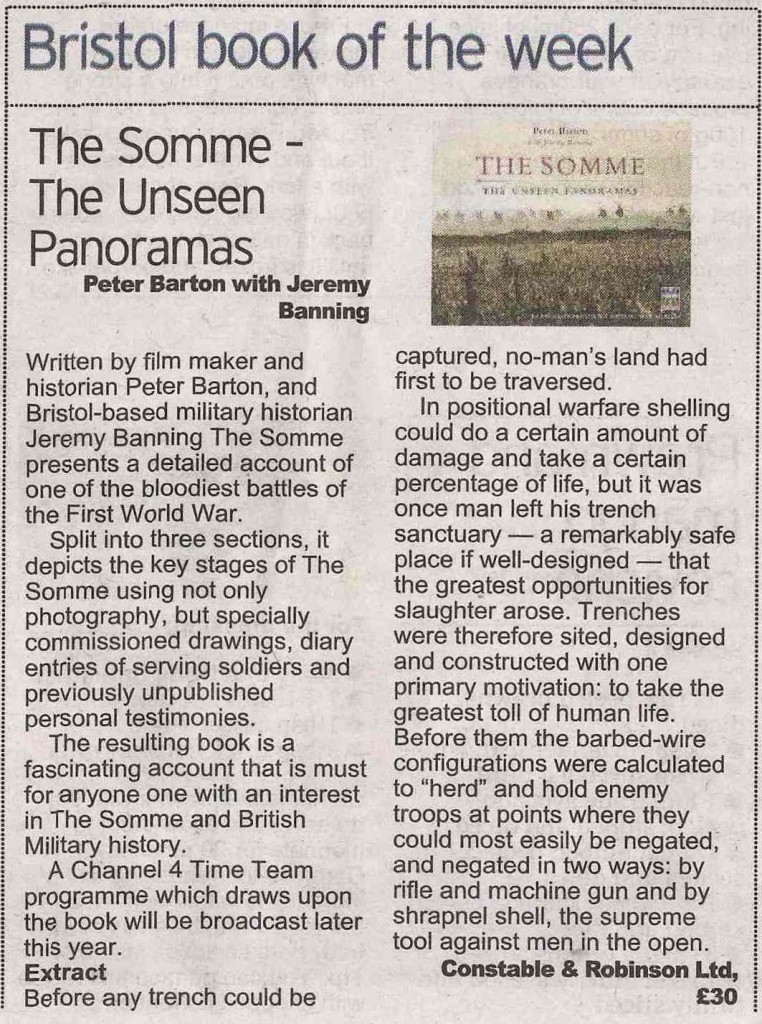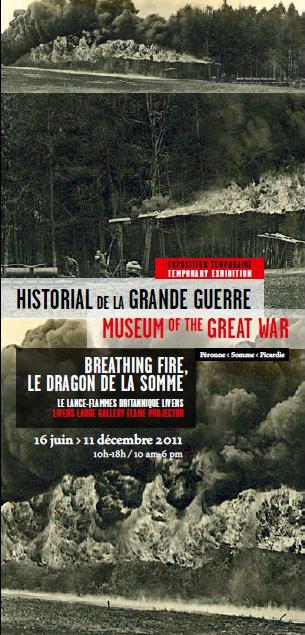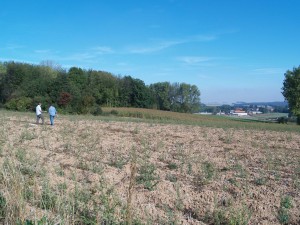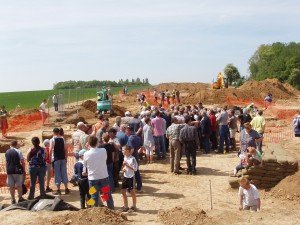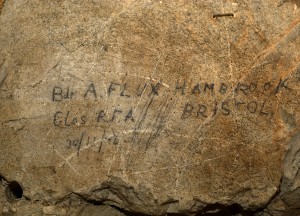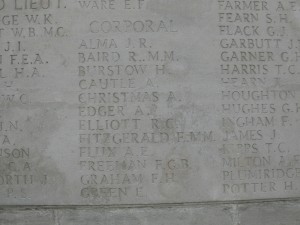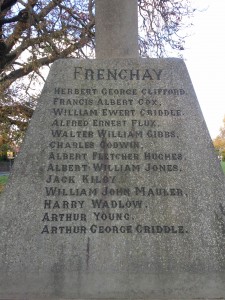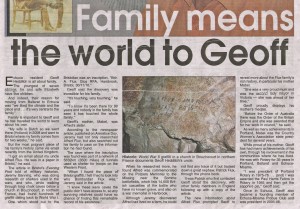Archive for 2011
Commemorative Service to be held at Memorial Wall, Wellington Quarry, Arras at 6.30 am, 9 April 2011
Calling all Western Front visitors!
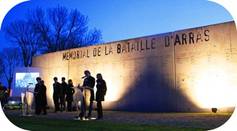 With so much emphasis on the 1 July commemorations on the Somme and the mass pilgrimage that takes place every year, this buy ambien sleeping tablets year please spare a thought for the men who fought in the 1917 Battle of Arras. It was the most savage infantry offensive of the war with the highest daily rate of casualties – over 4,000 men per day. The campaign started with enormous success on Easter Monday, 9 April 1917 with the greatest advance of the war to date but ended in disillusionment and utter exhaustion 39 days later in the fields around Oppy, Roeux, Monchy-le-Preux and Cherisy. Arras is by far my favourite place to visit – there is something about it that I just can’t get enough of and even when driving down to the Somme for a tour, recce or meeting I feel a slight wistfulness as I pass the Vimy Memorial, the grain silos at Roeux, so close to the site of the dreaded Chemical Works and the spire of Monchy church with Monchy British Cemetery in the foreground.
With so much emphasis on the 1 July commemorations on the Somme and the mass pilgrimage that takes place every year, this buy ambien sleeping tablets year please spare a thought for the men who fought in the 1917 Battle of Arras. It was the most savage infantry offensive of the war with the highest daily rate of casualties – over 4,000 men per day. The campaign started with enormous success on Easter Monday, 9 April 1917 with the greatest advance of the war to date but ended in disillusionment and utter exhaustion 39 days later in the fields around Oppy, Roeux, Monchy-le-Preux and Cherisy. Arras is by far my favourite place to visit – there is something about it that I just can’t get enough of and even when driving down to the Somme for a tour, recce or meeting I feel a slight wistfulness as I pass the Vimy Memorial, the grain silos at Roeux, so close to the site of the dreaded Chemical Works and the spire of Monchy church with Monchy British Cemetery in the foreground.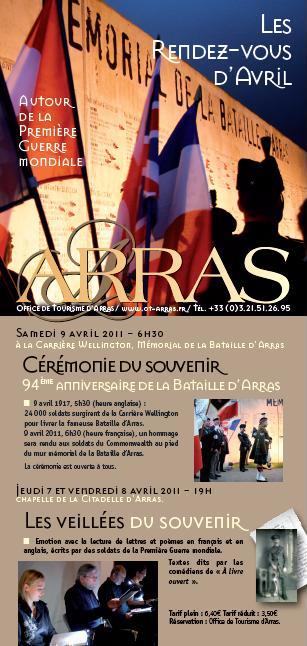
I have just received details of the annual commemorative service to be held at the Wellington Quarry, Arras on Saturday 9 April 2011 at 0630hrs (local time). This service, held on the 94th anniversary of the start of battle is held at the Memorial Wall – if you come into the car park from the Beaurains road then you won’t miss it. The ceremony is open to all.
Sadly, owing to work and family commitments I will not be able to make it this year but have passed my apologies on to Isabelle Pilarowski and her colleagues. I know that the organisers like to use extracts from soldiers who actually took place in the battle and, having given Isabelle a copy of the 1000 page memoir of Percy Clare, 7th East Surrey Regiment, she has promised that she will be using his superb descriptions of battle during the service. Percy’s memoirs were used extensively in the Arras panorama book – from his descriptions of pre-battle training, through the 9 April attack and subsequent days spent between Arras and the fields below Monchy ending with the fateful 3 May attacks – a very black day for the Third Army.
 As a way of thanking the copyright holders we gave them a highly personalised tour of the Arras battlefield (following the 7th East Surreys) when they came over in November 2010 to listen to our lecture in French. More details can be found by reading the blog post here: Arras – battlefield tour & lecture: 12 November 2010
As a way of thanking the copyright holders we gave them a highly personalised tour of the Arras battlefield (following the 7th East Surreys) when they came over in November 2010 to listen to our lecture in French. More details can be found by reading the blog post here: Arras – battlefield tour & lecture: 12 November 2010
A two-sided pdf file with more details on April’s events is available on request – please contact me here and I will email you a copy.
These events include guided walks & tours (French speaking only) in Neuville-St-Vaast, Roeux and Arras itself and seem very good value at just €3.00 per person.
I will certainly have the men of the Third Army in my memories on the morning of 9 April and would urge anyone over on a battlefield tour at that time to attend and pay their respects.
Railway Chateau Cemetery to be returned to lawn
I have just heard that the dreadful CWGC experiment at Railway Chateau Cemetery outside of Ypres where they removed the turf and put down some sort of hard standing has been scrapped. In fairness to the CWGC they always said it was an experiment but I am sure after the comments on various war forums plus those left in the visitor’s book that they were assured hadn’t been greeted with anything other than distress. Defintely a thumbs down from all who had written in the visitors book when I was there. Thank goodness that common sense has prevailed. I will visit again later in the year and post a picture then. A description of my visit in December 2009 can be read here: CWGC Climate Change Trials.

Railway Chateau Cemetery in December 2009. Spring 2011 will see a welcome return of turf to this quiet little cemetery.
This news was from the Western Front Association and the extract from their website can be read below. Link here also: WFA Article on Railway Chateau being returned to lawn.
CWGC News: Railway Chateau Cemetery to be returned to lawn
The Commonwealth War Graves Commission has been conducting climate change demonstrations at four of its cemeteries in northern Europe.
One of the primary aims of the demonstrations has been to elicit public feedback on the different approaches taken. In November 2009, an online survey was developed for this purpose, whilst the CWGC also monitored comments in the Visitor Books at each of the four cemeteries.
Support for the Commission’s work on climate change, and the approaches taken at three of the cemeteries, was strong but there was little enthusiasm for the hard landscaping solution adopted at Railway Chateau.
Although dry landscaping is commonly and successfully employed by the Commission at cemeteries where grass cannot be grown or maintained – usually due to a lack of a regular water supply – this was the first time it was demonstrated at a cemetery in northern Europe.
As a result of the feedback received, Railway Chateau will be re-established as a typical lawn cemetery in the spring of 2011.
The cemetery will remain part of the climate change demonstrations with the CWGC using drought-tolerant plants in the borders and a drought tolerant grass mix – similar to the approach taken at Oostduinkerke Communal Cemetery in Belgium. The demonstrations will run for another four years and the CWGC will continue to monitor and update the public on the outcomes.
Remains of Canadian Great War soldier finally identified – Private Thomas Lawless, 49th Battalion CEF
I was delighted to read that a Canadian casualty of the Great War whose remains were found by construction workers near Avion in 2003 have now been identified using DNA. The man, a 28-year-old Irish immigrant 183425 Private Thomas Lawless, 49th Battalion (Alberta Regiment), Canadian Expeditionary Force was killed in a raid on the German lines on 9 June 1917.
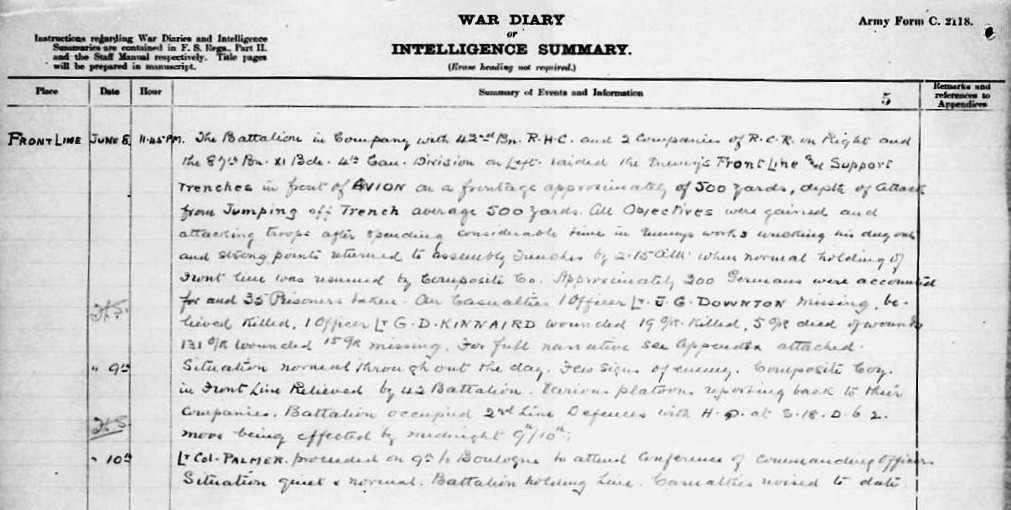
49th Bn War Diary extract 8th - 9th June 1917. Note the large losses - including 131 Other Ranks wounded and 15 O.R. missing. CLICK TO ENLARGE
Press reports indicate that his remains, along with those of 808723 Private Herbert Peterson of the same battalion, were discovered during a road-building project. Private Peterson’s remains were positively identified in 2007 and were buried with full military honours at La Chaudière Military Cemetery in Vimy in the same year.
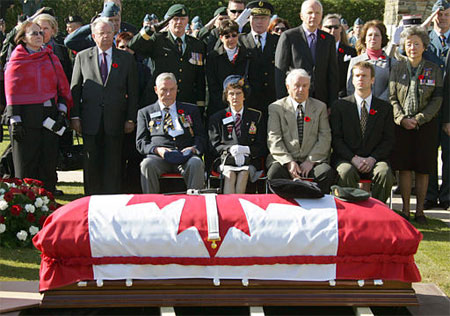
The burial of Private Herbert Peterson in 2007. He was killed on 9 June 1917 near Avion and his remains were found by construction workers in 2003. Image by Michael Springler taken from www.reallygoodfriend.com
It took six years of research and testing before forensic scientists and DNA specialists could positively identify Thomas Lawless. The remains of both men had been returned to Canada because metal insignia identified their battalion and nationality.
The story has been covered in the Canadian Press. Links below to the Edmonton Journal and The Vancouver Sun.
The Vancouver Sun – Researchers ID fallen soldier from First World War
Thomas Lawless’s details are recorded in the CWGC register HERE. Interestingly he is reported as being buried in La Chaudière Military Cemetery in Vimy, despite the service not taking place until 15 March 2011. The service will take place with members of his Irish family in attendance.
As a ‘missing’ Canadian soldier, Thomas Lawless is still commemorated on the Vimy Memorial. The memorial is inscribed with the names of over 11,000 Canadian soldiers who were posted as ‘missing, presumed dead’ in France. The Canadian Virtual War Memorial confirms that Thomas Lawless is on the Vimy Memorial: PRIVATE THOMAS LAWLESS
Below is the official notification of the positive identification of Private Lawless: Historic Casualty Identification
BG–11.002 – February 24, 2011
The Government of Canada, the Department of National Defence and the Canadian Forces are dedicated to honouring those who have made the ultimate sacrifice by ensuring that, when possible, they will be identified and buried in a known grave.
Nearly 28 000 members of Canada’s Army, Air Force, and Navy who died in the First and Second World Wars and the Korean War have no known or maintainable grave. The majority of these service personnel – approximately 19 500 – went missing in France and Belgium during the First World War. Every year, some of the formerly missing are discovered, and the Department of National Defence is responsible for using historical and scientific methods to determine their identity.
Identification is the result of a collection of historical research and biological tests which eventually determine the most likely serviceman.
The first step in identification is to search records, such as military personnel records, burial registrar records, war diaries and maps, and regimental histories to create an historical profile of the unknown person. Purely historical identifications are rare, however, and DND usually seeks biological evidence to support other documents.
Biological anthropologists study the remains to determine the number of persons, their ages and heights, their dental health, their overall health and if possible, clues as to how they may have died. The resulting profile can further reduce the final list of candidates, and genetic testing of the remaining candidates can lead to an identification or reduce the candidate pool further.
Genetic testing of war remains requires that DNA be extracted from bone or teeth and then compared with genetic material donated by the descendents of the candidates.
Unfortunately, the use of DNA, while a method which has made identification more likely, can be limited by the availability of donors and the difficulty of extracting viable DNA from older remains. More recently, National Defence has used stable isotope technology to help differentiate the origins of candidates. By using the regional properties of certain elements to track the mobility of an individual, stable isotope technology can detect the locations in which an individual has been raised (to the age of approximately 21) and the locations in which an individual lived in the final ten to fifteen years of their lives. Such testing allows DND to exclude candidates based on where they were raised or where they lived prior to enlistment.
No doubt new technologies and increased access to historical documents will further enhance the precision and ability to identify Canada’s unknown soldiers, sailors and airmen and airwomen.
I think this is a great job by the Canadians and shows what can be done with some dedication and by providing the necessary budget. My congratulations go the Canadian government but also to the unsung heroes – the many professionals whose collaborative efforts in freely offering their time made this historical identification possible. Now, owing to their efforts, Private Lawless can finally rest in peace in a named grave. It would be wonderful if a similar effort was found in providing positive ID to the bodies of fifteen men from the York and Lancaster Regiment who were found in the French village of Beaucamps-Ligny in November 2009.
Following the three week archaeological dig at Mametz last May I am pleased to report that a new exhibition is to open at the Historial, Peronne from 16 June 2011.
Below is the text from the flyer that has been produced. If you are on the Somme from June – December then please do visit the Historial for the chance to see this exhibition.
An exhibition that tells for the first time the story behind the Livens Large Gallery Flame Projector. Employed only ten times during the war – nine of which were on the Somme. The machine was 19 metres long, 40 centimetres wide, and weighed 2.5 tonnes. It was deployed from a tunnel beneath No Man’s Land by a specially-trained crew of seven, and fired a jet of flaming oil 100 metres long over the German trenches: the strangest, rarest and most horrifying weapon of the Great War.
In May 2010 historians and archaeologists excavated a section of the British trenches near the village of Mametz in search of the remains of a Flame Projector believed to have been buy cheap tramadol 100mg abandoned underground in late June 1916, just before the Battle of the Somme. The results were extraordinary, and for the first time for almost 100 years some of the original parts found in 2010 can be viewed alongside a specially-commissioned replica constructed by local students of vocational training centres.
A special screening of the film “Breathing Fire – Le Dragon de la Somme” will be shown at the opening of the exhibition, 16 June at 6pm.
 A downloadable version of this flyer in pdf is available by clicking on the link below. Please feel free to disemminate this information to all your friends and battlefield visitors. It promises to be a terrific exhibition and for many will be the first chance to see parts of the Livens Flame Projector, buried in the Somme mud for 94 years.
A downloadable version of this flyer in pdf is available by clicking on the link below. Please feel free to disemminate this information to all your friends and battlefield visitors. It promises to be a terrific exhibition and for many will be the first chance to see parts of the Livens Flame Projector, buried in the Somme mud for 94 years.
Breathing Fire – Le Dragon de la Somme exhibition
Exact date of transmission of the version for UK television still to be determined. I will post this when I find out the date from the production company.
I use the tools supplied by WordPress and Google Analytics to follow how visitors reach my site. I am seeing a large number of visitors searching for details on the archaeological dig and accompanying television documentary programme that followed our search for any surviving pieces of a Livens Large Gallery Flame Projector at Mametz in May 2010. As the site was open to visitors and there was no ban on photos I don’t think it is breaking any great secret to reveal that we DID find pieces of this amazing weapon. It was 19 metres long, 40 centimetres wide and weighed 2.5 tonnes. Its specialised team of seven ensured it fired three ten second bursts of flame for up to 100 metres and, perhaps most remarkably, this was fired from a tunnel or ‘Russian Sap’ dug specially under No Man’s Land.
At present (14 February) there is no broadcast date available for the UK or North American market. In the UK the programme will be broadcast as a Channel 4 Time to order tramadol Team Special. As soon as I know the broadcast date I will post the details so please check back or follow me on Twitter to be kept up to date.
In the meantime, a couple of pictures.
Update – 13 April 2011.
The Time Team Special will be shown on Channel 4 at 9pm on 14 April. A detailed description of the birth, evolution and structure of the project along with maps and images is now available here:
It has been reported in the Australian press (Sydney Morning Herald) that the body of an Australian soldier has been found on the Somme battlefield. The piece, entitled ‘Somme gives up the body of another Anzac’ dated 17 January tells of a the remains of a body being disturbed during digging for a drainage ditch near the infamous site of Mouquet Farm (also known as Moo Cow or Mucky Farm).
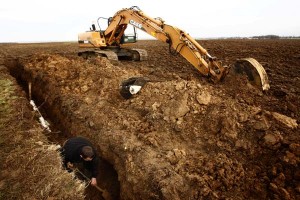
The site near Mouquet Farm where the Australian soldier's remains were found. Published online at http://www.smh.com.au/. Copyright Mike Bowers
The remains were excavated by local café owner Dominique Zanardi who was on site with the Mayor of Pozières. The report mentions that “there was no identity disc on the body, the soldier’s pistol holster is stamped “AUSTRALIA” and “WA””. I know I am not alone in advocating the involvement of qualified archaeologists using a professional approach. The issue of finding bodies on the battlefield has been going on for 90+ years but, following the precedent set by the dig at Fromelles, it is a very backward step to allow amateur excavation of these sites, however well intentioned the persons involved may be. The shocking pictures from the retrieval of fifteen British soldiers at Beauamps-Ligny are clear evidence of the need to employ professionals.
A follow-up piece entitled ‘Army moves to claim lost Digger‘ was published today which elaborates further on the next steps.
I have been researching certain members of this family after I spotted some graffiti of a Great War soldier, Bombardier Alfred Flux from Hambrook, whilst exploring caves under the church in Bouzincourt on the Somme in May last year. Whilst the caves were covered in graffiti from soldiers from all over the world I was intrigued by this local man and endeavoured to find out more about him.
Full details of this can be found on the newspaper link below as the story was featured in the Armistice Day editions of the Bristol Evening Post, Western Daily Press and Bath Chronicle.
Alfred Flux
832011 Corporal Alfred Ernest Flux, serving with “Y” 61st Trench Mortar Battery, Royal Field Artillery was killed on 21 March 1918, aged 25. He was the son of Alfred William and Emily Flux, of Walton Farm, Hambrook, Bristol and is commemorated on the Pozières Memorial to the Missing.
Alfred had served in 1916 in the Laventie area with involvement in the Battle of Fromelles on 19/20 July 1916 and stayed in this sector until his Division moved south to the Somme in mid-November 1916. The war diary says they were billeted in caves under Bouzincourt Church on 28 November and the graffiti is dated 30 November. The Battery stayed at Bouzincourt until January 1917 and then they went back for rest. February 1917 saw a move to Harbonnieres, south of the River Somme until May 1917. By June 1917 the battery was near Arras and then moved up to the Ypres sector where they were employed as stretcher bearers for the 38th (Welsh) Division in the Canal Bank sector on the first say of the Third Battle of Ypres (Passchendaele). They stayed in the salient until September when they moved back down to the Arras front, holding the dreaded Chemical Works and Greenland Hill sectors for the next two and half months. They then moved down to the Somme area and in January 1918 were ensconced in the Holnon Wood sector west of St Quentin. It was whilst holding these positions against the German Spring Offensive on 21 March 1918 that Alfred Flux was killed.
Since the article being released I have been in further touch with members of the Flux family, notably Judith Pike (who lives in Bristol) and Geoff Hedditch from Echuca, Victoria in Australia. I had done a fair bit of research into the family so knew that Alfred was one of a family of five children but Judith explained that Alfred’s younger brother, Francis Charles (but known as Charlie until his death at the ripe old age of 86 years) had also served as an artilleryman in the Great War. I volunteered to find out as much of his service as I could and was able to produce a detailed report for the family. Luckily, Charlie’s service record had survived and so I could piece together his service with 47 Brigade, RFA and then various Trench Mortar Batteries of the 19th Division. Other than suffering from dysentery in 1915 he appears to have been unwounded and was demobbed in February 1919.
I was both amazed and delighted by the huge amount of detail you have unearthed. Your information has opened up that era in a fascinating way I never expected to happen. I would like to say a big thank you for your diligence in researching my grandfather, and of course, initially finding out so much about his brother Alfred. Thank you for all you have done to bring real colour into our family history, and I want to wish you every success with your work as a researcher of the Great War. Judith Pike, Frenchay, Bristol
I was delighted to receive some post this morning from Geoff Hedditch in Australia. Enclosed in the envelope was a copy of his local newspaper, the Riverine Herald, which included an article about Geoff and his delight at the work I had done. I would like to thank Patrick, Judith and Geoff (all members of the Flux family) and Alan Freke and his fine colleagues at Frenchay Village Museum for their help. It just goes to show what a spark of interest coupled with a bit of determination can achieve – quite amazing that this story could travel all the way to Australia.
Please also remember the Flux boys themselves – Alfred and Charlie – who both answered their country’s call when needed and who, for one, paid the ultimate price.


